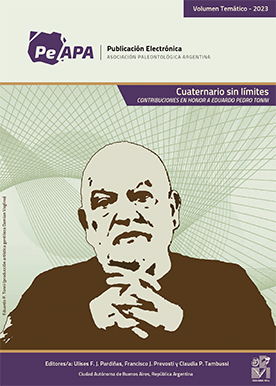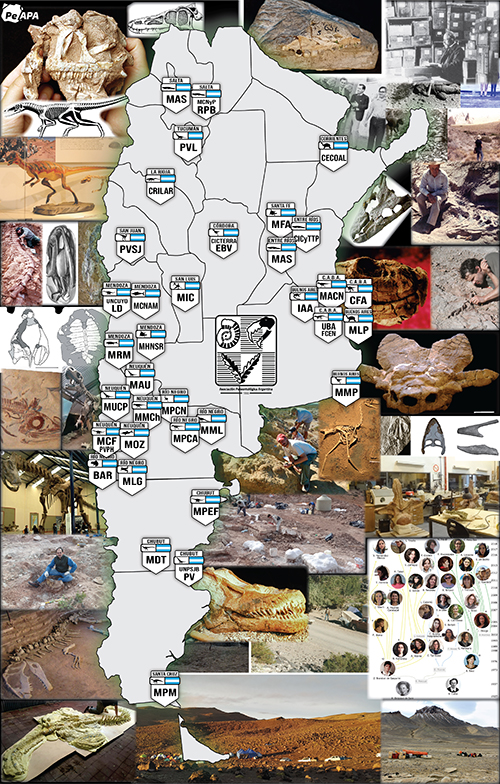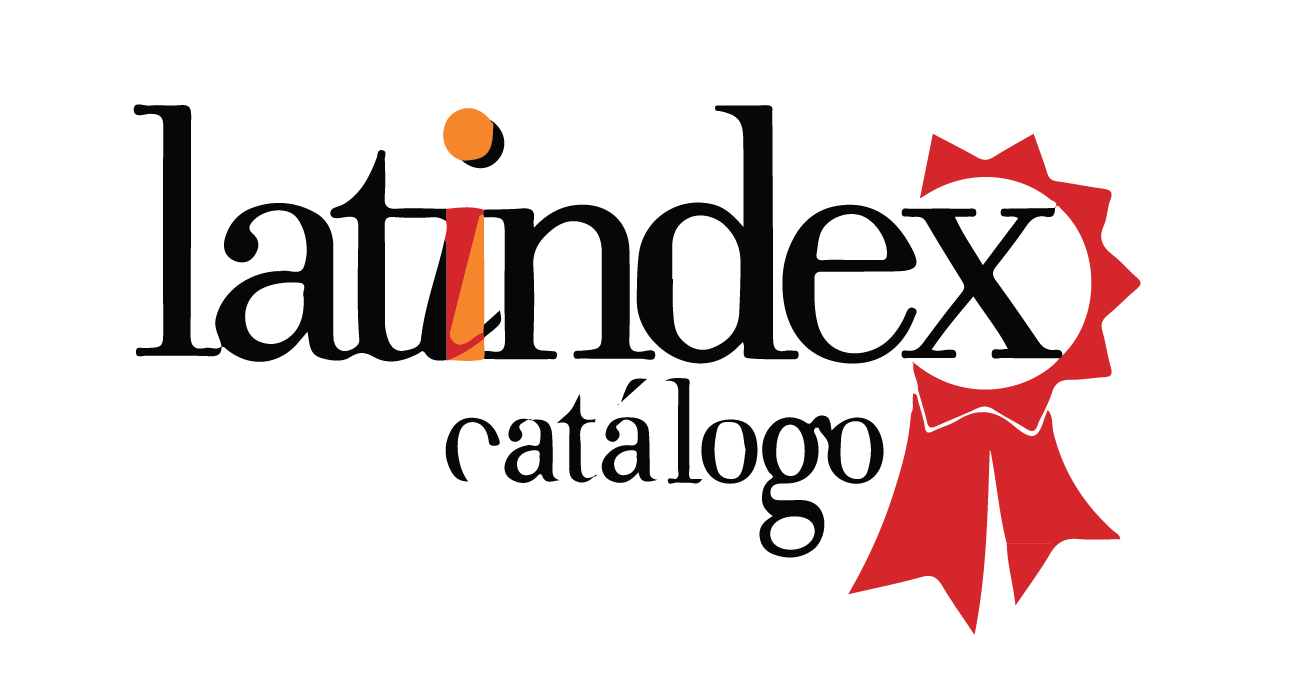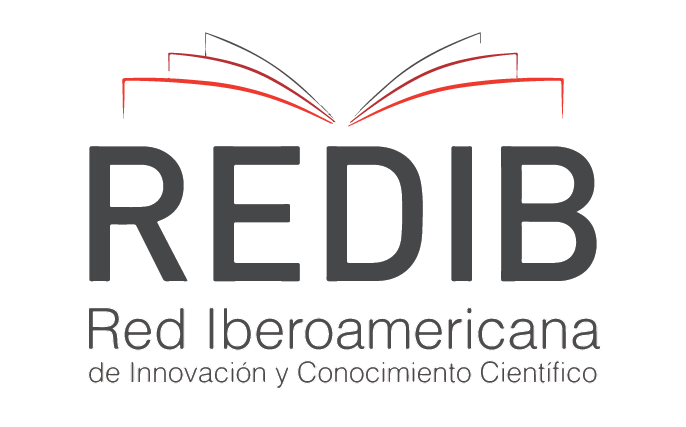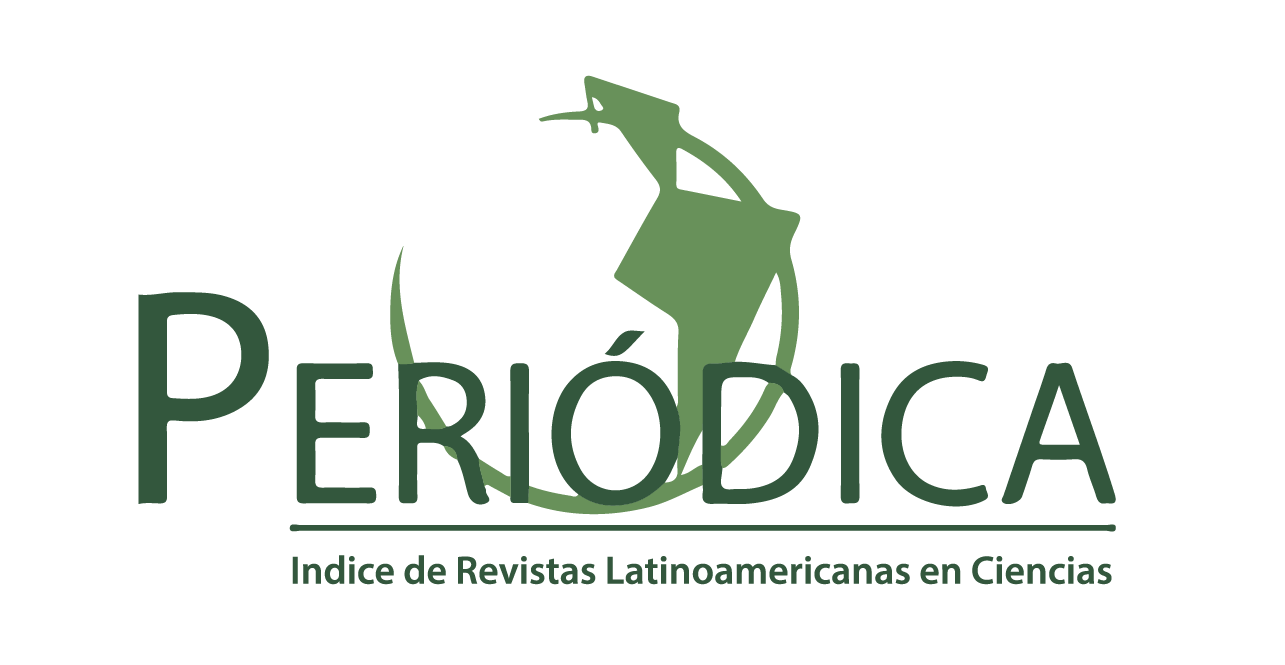NEW REBBACHISAURID REMAINS FROM THE HUINCUL FORMATION (MIDDLE CENOMANIAN–EARLY TURONIAN) OF THE CENTRAL NEUQUÉN BASIN, PATAGONIA, ARGENTINA
DOI:
https://doi.org/10.5710/PEAPA.22.04.2022.419Keywords:
Rebbachisauridae, osteología, Cretácico Superior, cambio faunistico, laminas neuralesAbstract
In the central Neuquén Basin, the Huincul Formation comprises thick successions of Upper Cretaceous fluvial deposits widely exposed at the south and north-west of Huincul High. The vertebrate fossil record from the Huincul Formation is very abundant, especially considering the saurischian dinosaurs, including several theropod (Mapusaurus, Taurovenator, Aoniraptor, Skorpiovenator, Ilokelesia, Gualicho, Overoraptor, Tralkasaurus, and Huinculsaurus) and sauropod specimens (Choconsaurus, Argentinosaurus, Cathartesaura, Limaysaurus, and the indeterminate rebbachisaurid MMCH-Pv-49). In this contribution, we describe new rebbachisaurid sauropod findings from the El Orejano locality (Neuquén Province, Argentina), where coarse sandstones outcrop referred to the lower section of the Huincul Formation. The new material includes three axial elements that we refer to Rebbachisauridae: a partial dorsal neural arch (MAU-Pv-EO-633), an incomplete dorsal vertebra (MAU-Pv-EO-634), and an almost complete caudal vertebra (MAU-Pv-EO-666). These new findings share different features with other members of that family, although show some morphological differences with other rebbachisaurid taxa, which suggest a more diversified fauna in the central Neuquén Basin than previously known, at least during the Cenomanian/Turonian interval. This record from the new fossiliferous locality of El Orejano allows us to improve our knowledge about the morphological diversity of the Rebbachisauridae during the early Late Cretaceous. Furthermore, it represents one of the most modern records of the family, adding new information on the last stages of the evolutionary history of rebbachisaurids.
References
Apesteguía, S. (2002). Successional structure in continental tetrapod faunas from Argentina along the Cretaceous. 2° Simposiosobre el Cretácico de América del Sur (pp. 135–141). Sao Pedro, Brazil.
Apesteguía, S. (2007). The sauropod diversity of the La Amarga Formation (Barremian), Neuquén (Argentina). Gondwana Research,12(4), 533–546.
Apesteguía, S., Gallina, P. A., & Haluza, A. (2010). Not just a pretty face: anatomical peculiarities in the postcranium of reb-bachisaurids (Sauropoda: Diplodocoidea). Historical Biology, 22(1–3), 165–174.
Ardolino, A. A. & Franchi, M. R. (1996). Geología. In Geología y Recursos Minerales del Departamento Añelo. Provincia del Neuquén. República Argentina. Cartas Geológicas y de Recursos Minerales de la Provincia del Neuquén. Escala 1: 200.000. Dirección Nacional del Servicio Geológico, Boletín, 3, 9–106.
Arthur, M. A., Schlanger, S. O., & Jenkyns, H. C. (1987). The Cenomanian–Turonian oceanic anoxic event II. Palaeoceanographic controls on organic-matter production and preservation. In J. Brook & A. J. Fleet (Ed.), Marine Petroleum Source Rocks (pp.401–420). Geological Society Special Publications.
Bellardini, F., Coria, R. A., Pino, D. A., Windholz, G. J., Baiano, M. A., & Martinelli, A. G. (2022). Osteology and phylogenetic relationships of Ligabuesaurus leanzai (Dinosauria: Sauropoda) from the Early Cretaceous of Neuquén Basin, Patagonia, Argentina. Zoological Journal of Linnean Society. https://doi.org/10.1093/zo-olinnean/zlac003
Bonaparte, J. F. (1996). Cretaceous Tetrapods of Argentina. Münchner Geowissenschaftliche Abhandlungen A, 30, 73–130.
Bonaparte, J. F. (1997). Rayososaurus agrioensis Bonaparte, 1995. Ameghiniana, 34(1), 116.
Borsuk-Bialynicka, M. (1977). A new camarasaurid sauropod Opisthocoelicaudia skarzynskiigen. n., sp. n. from the Upper Cretaceous of Mongolia. Palaeontologia Polonica, 37(5), 5–64.
Calvo, J. O. & Salgado, L. (1995). Rebbachisaurus tessonei sp. nov. a new Sauropoda from the Albian-Cenomanian of Argentina; new evidence on the origin of the Diplodocidae. Gaia, 11, 13–33.
Candeiro, C. R. A. (2015). Middle Cretaceous dinosaur assemblages from northern Brazil and northern Africa and their implications for northern Gondwanan composition. Journal of South American Earth Sciences, 61, 147–153.
Candeiro, C. R. A., Fanti, F., Therrien, F., & Lamanna, M. C. (2011). Continental fossil vertebrates from the mid-Cretaceous (Albian–Cenomanian) Alcântara Formation, Brazil, and their relationship with contemporaneous faunas from North Africa. Journal of African Earth Sciences, 60(3), 79–92.
Canudo, J. I., Carballido, J. L., Garrido, A., & Salgado, L. (2018). A new rebbachisaurid sauropod from the Aptian–Albian, Lower Cretaceous Rayoso Formation, Neuquén, Argentina. Acta Palaeontologica Polonica, 63(4), 1–13.
Carballido, J. L., Garrido, A. C., Canudo, J. I., & Salgado, L. (2010). Re-description of Rayososaurus agrioensis Bonaparte (Sauropoda, Diplodocoidea), a rebbachisaurid from the early Late Cretaceous of Neuquén. Geobios, 43(5), 493–502.
Carballido, J. L., Pol, D., Otero, A., Cerda, I. A., Salgado, L., Garrido, A.C., Ramezani, J., Cuneo, R. N., & Krause, J. M. (2017). A new giant titanosaur sheds light on body mass evolution among sauropod dinosaurs. Proceedings of the Royal Society B: Biological Sciences, 284(1860), 20171219. http://doi.org/10.1098/rspb.2017. 1219
Carballido, J. L., Salgado, L., Pol, D., Canudo, J. I., & Garrido, A. C. (2012). A new basal rebbachisaurid (Sauropoda, Diplodocoidea) from the Early Cretaceous of the Neuquén Basin; evolution and biogeography of the group. Historical Biology, 24(6), 631–654.
Carpenter, K. (2018). Maraapunisaurus fragillimus, ng (formerly Amphicoelias fragillimus), a basal rebbachisaurid from the Morrison Formation (Upper Jurassic) of Colorado. Geology of the Intermountain West, 5, 227–244.
Carvalho, I. S., dos Santos Avilla, L., & Salgado, L. (2003). Amazonsaurus maranhensis gen. and sp. nov. (Sauropoda, Diplodocoidea) from the Lower Cretaceous (Aptian-Albian) of Brazil. Cretaceous Research, 24(6), 697–713.
Castro, D. F., Bertini, R. J., Santucci, R. M., & Medeiros, M. A. (2007). Sauropods of the Itapecuru Group (lower/middle Albian), São Luís-Grajaú Basin, Maranhão State, Brazil. Revista Brasileira dePaleontología,10(3), 195–200.
Cevallos, M. F. (2005). Análisis estratigráfico de alta frecuencia del límite Kimmeridgiano–Tithoniano en el subsuelo de la Dorsal deHuincul, Cuenca Neuquina. Petrotecnia, VI Congreso de Exploración y Desarrollo de Hidrocarburos, 34–55.
Cope, E. D. (1878). A new species of Amphicoelias.American Naturalist, 12, 563–565.
Corbella, H., Novas, F. E., Apesteguía, S., & Leanza, H. A. (2004). First fission-track age for the dinosaur-bearing Neuquén Group (Upper Cretaceous) Neuquén Basin, Argentina. Museo de Ciencias Naturales, Nueva Serie, 6(2), 227–232.
Coria, R. A. & Salgado, L. (2005). Mid-Cretaceous turnover of saurischian dinosaur communities: evidence from the Neuquén Basin. Geological Society, London, Special Publications, 252(1), 317–327.
da Costa Pereira. V. L. G., Veiga, I. M. M. G., Ribeiro, T. B., Cardozo, R.H. B., dos Anjos Candeiro, C. R., & Bergqvist, L. P. (2020). The path of giants: a new occurrence of Rebbachisauridae (Dinosauria, Diplodocoidea) in the Açu Formation, NE Brazil, and its paleobiogeographic implications. Journal of South American Earth Sciences, 100, 102515.
Dalla Vecchia, F. M. (1998). Remains of Sauropoda (Reptilia, Saurischia) in the Lower Cretaceous (Upper Hauterivian/LowerBarremian) limestones of SW Istria (Croatia). Geologia Croatia,51(2), 105–134.
Dalla Vecchia, F. M. (1999). Atlas of the sauropod bones from the Upper Hauterivian–Lower Barremian of Bale/Valle (SW Istria, Croatia). Natura Nascosta,18, 6–41.
Dalla Vecchia, F. M. (2005). Between Gondwana and Laurasia: Cretaceous sauropods in an intraoceanic carbonate platform. In V.Tidwell & K. Carpenter (Eds.), Thunder-lizards. The sauropodomorph dinosaurs (pp. 395–429). Indiana University Press.
Elder, W. P. (1987). The paleoecology of the Cenomanian–Turonian (Cretaceous) stage boundary extinctions at Black Mesa, Arizona. Palaios, 2(1), 24–40.
Fanti, F., Cau, A., Cantelli, L., Hassine, M., & Auditore, M. (2015). New information on Tataouinea hannibalis from the Early Cretaceous of Tunisia and implications for the tempo and mode of rebbachisaurid sauropod evolution. PloS One,10(4), e0123475.
Fanti, F., Cau, A., & Hassine, M. (2014). Evidence of titanosauriforms and rebbachisaurids (Dinosauria: Sauropoda) from the Early Cretaceous of Tunisia. Journal of African Earth Sciences, 90, 1–8.
Fanti, F., Cau, A., Hassine, M., & Contessi, M. (2013). A new sauropod dinosaur from the Early Cretaceous of Tunisia with extreme avian-like pneumatization. Nature Communications, 4(1), 1–7.
Gallina, P. A. & Apesteguía, S. (2005). Cathartesaura anaerobica gen. and sp. nov., a new rebbachisaurid (Dinosauria, Sauropoda) from the Huincul Formation (Upper Cretaceous), Río Negro, Argentina. Revista del Museo Argentino de Ciencias Naturales, 7(2), 153–166.
Gallina, P. A., Canale, J. I., & Carballido, J. L. (2021). The earliest known titanosaur sauropod dinosaur. Ameghiniana, 58(1), 35–51.
Garrido, A. C. (2010). Estratigrafía del Grupo Neuquén, Cretácico Superior de la Cuenca Neuquina (Argentina): nueva propuesta de ordenamiento litoestratigráfico. Revista del Museo Argentinode Ciencias Naturales Nueva Serie r, 12(2), 121–177.
Goloboff, P. A. & Catalano, S. A. (2016). TNT version 1.5, including a full implementation of phylogenetic morphometrics. Cladistics, 32(3), 221–238.
Haluza, A. & Canale, J. I. (2011). New evidence on the anatomy, function and evolutionary constraints in sauropod pedes based on new material from Mupaleo site (Candeleros Formation), Neuquén, Patagonia, Argentina. Ameghiniana, Suplemento Resúmenes, 48(4), R101.
Haluza, A., Canale, J. I., Otero, A., Pérez, L. M., & Scanferla, C. A. (2012). Changes in vertebral laminae across the cervicodorsal transition of a well-preserved rebbachisaurid (Dinosauria, Sauropoda) from the Cenomanian of Patagonia, Argentina. Journal of Vertebrate Paleontology, 32(1), 219–224.
Harris, J. D. (2004). Confusing dinosaurs with mammals: tetrapod phylogenetics and anatomical terminology in the world of homology. The Anatomical Record Part A: Discoveries in Molecular, Cellular, and Evolutionary Biology, 281(2), 1240–1246.
Herrero Ducloux, A. (1946). Contribución al conocimiento geológicodel Neuquén extraandino. Boletín de Informaciones Petroleras, 23(226), 245–281.
Hut, P., Alvarez, W., Elder, W. P., Hansen, T., Kauffman, E. G., Keller,G., Shoemaker, E. M., & Weissman, P. R. (1987). Comet showers as a cause of mass extinctions. Nature, 329(6135), 118–126.
Ibiricu, L. M., Casal, G. A., Lamanna, M. C., Martínez, R. D., Harris, J. D.,& Lacovara, K. J. (2012). The southernmost records of Rebbachisauridae (Sauropoda: Diplodocoidea), from early Late Cretaceous deposits in central Patagonia. Cretaceous Research, 34, 220–232.
Ibiricu, L. M., Casal, G. A., Martínez, R. D., Álvarez, B. N., & Poropat, S.F. (2020). New materials and an overview of Cretaceous vertebrates from the Chubut Group of the Golfo San Jorge Basin, central Patagonia, Argentina. Journal of South American Earth Sciences, 98, 102460.
Ibiricu, L. M., Casal, G. A., Martínez, R. D., Lamanna, M. C., Luna, M.,& Salgado, L. (2013). Katepensaurus goicoecheai, gen. et sp. nov., a Late Cretaceous rebbachisaurid (Sauropoda, Diplodocoidea)from central Patagonia, Argentina. Journal of Vertebrate Paleontology, 33(6), 1351–1366.
Ibiricu, L. M., Casal, G. A., Martínez, R. D., Lamanna, M. C., Luna, M.,& Salgado, L. (2015). New material of Katepensaurus goicoecheai (Sauropoda: Diplodocoidea) and its significance for the morphology and evolution of Rebbachisauridae. Ameghiniana, 52(4), 430–446.
Jenkyns, H. C. (2010). Geochemistry of oceanic anoxic events. Geochemistry, Geophysics, Geosystems, 11(3), 1–30.
Krause, J. M., Ramezani, J., Umazano, A. M., Pol, D., Carballido, J. L., Sterli, J., & Bellosi, E. S. (2020). High-resolution chronostratigraphy of the Cerro Barcino Formation (Patagonia): Paleobiologicimplications for the mid-cretaceous dinosaur-rich fauna of South America. Gondwana Research, 80, 33–49.
Lavocat, R. (1954). Sur les dinosauriens du continental intercalairedes Kem-Kem de la Daoura. Comptes Rendus 19° International Geological Congress (pp. 65–68). Paris, France.
Leanza, H. A., Apesteguıa, S., Novas, F. E., & de la Fuente, M. S. (2004). Cretaceous terrestrial beds from the Neuquén Basin (Argentina) and their tetrapod assemblages. Cretaceous Research, 25(1), 61–87.
Legarreta, L. & Gulisano, C. A. (1989). Análisis estratigráfico secuencial de la Cuenca Neuquina (Triásico superior–Terciario inferior). In G. Chebli & L. Spalletti (Eds.), Cuencas Sedimentarias Argentinas, Serie Correlación Geológica (vol. 6, pp. 221–243).
Lerzo, L. N., Carballido, J. L., & Gallina, P. A. (2021). Rebbachisaurid sauropods in Asia? A re-evaluation of the phylogenetic position of Dzharatitanis kingi from the late Cretaceous of Uzbekistan. Publicación Electrónica de la Asociación Paleontológica Argentina, 21(1), 18–27.
Lindoso, R. M., Medeiros, M. A. A., Carvalho de Souza, I., Pereira, A.A., Mendes, I. D., Iori, F. V., & Silva, T. C. M. (2019). A new rebbachisaurid (Sauropoda: Diplodocoidea) from the middle Cretaceous of northern Brazil. Cretaceous Research, 104, 104191.
Lydekker, R. (1893). On a sauropodous dinosaurian vertebra from the Wealden of Hastings. Quarterly Journal of the Geological Society, 49(1–4), 276–280. https://doi.org/10.1144/gsl.jgs.1893.049.01-04.44.
Maddison, W. P. & Maddison, D. R. (2011). Mesquite: A Modular System for Evolutionary Analysis. Version 2.75. http://www.mesquitepro-ject.org/.
Mannion, P. D. (2009). A rebbachisaurid sauropod from the Lower Cretaceous of the Isle of Wight, England. Cretaceous Research, 30(3), 521–526.
Mannion, P. D. & Barrett, P. M. (2013). Additions to the sauropod dinosaur fauna of the Cenomanian (early Late Cretaceous) Kem Kem beds of Morocco: palaeobiogeographical implications of the mid–Cretaceous African sauropod fossil record. Cretaceous Research, 45, 49–59.
Mannion, P. D., Upchurch, P., & Hutt, S. (2011). New rebbachisaurid (Dinosauria: Sauropoda) material from the Wessex Formation (Barremian, Early Cretaceous), Isle of Wight, United Kingdom.Cretaceous Research, 32(6), 774–780.
Mosquera, A., Silvestro, J., Ramos, V., Alarcón, M., & Zubiri, M. (2011). La estructura de la Dorsal de Huincul. In C. Arregui, H. Leanza, J.Vallés, J. Danieli, & O. Carbone (Eds.), Geología y recursos naturalesde la provincia de Neuquén. Relatorio del 18° Congreso GeológicoArgentino(pp. 385–397). Asociación Geológica Argentina.
Nopcsa, F. (1902). Notizen uber Cretacischen Dinosaurier. Pt. 3. Wirbel eines sudamerikanischen Sauropoden. Sitz. Berlin Akademieder Wesenschaften, 3, 108–114.
Novas, F. E., Agnolín, F. L., Ezcurra, M. D., Porfiri, J., & Canale, J. I. (2013). Evolution of the carnivorous dinosaurs during the Cretaceous: the evidence from Patagonia. Cretaceous Research, 45,174–215.
Novas, F. E., De Valais, S., Vickers-Rich, P., & Rich, T. (2005). A large Cretaceous theropod from Patagonia, Argentina, and the evolution of carcharodontosaurids. Naturwissenschaften, 92,226–230.
Otero, A. & Salgado, L. (2015). El registro de Sauropodomorpha (Dinosauria) de la Argentina. Publicación Electrónica de la Asociación Paleontológica Argentina, 15(1), 69–89.
Paulina Carabajal, A., Canale, J. I., & Haluza, A. (2016). New rebbachisaurid cranial remains (Sauropoda, Diplodocoidea) from the Cretaceous of Patagonia, Argentina, and the first endocranial description for a South American representative of the clade. Journal of Vertebrate Paleontology, 36(5), e1167067.
Pereda Suberbiola, J., Torcida, F., Izquierdo, L. A., Huerta, P., Montero,D., & Pérez, G. (2003). First rebbachisaurid dinosaur (Sauropoda, Diplodocoidea) from the early Cretaceous of Spain: palaeobiogeographical implications. Bulletin de la Société géologique de France,174(5), 471–479.
Petrizzo, M. R., Watkins, D. K., Macleod, K. G., Hasegawa, T., Huber, B. T., Batenburg, S. J., & Kato, T. (2021). Exploring the paleoceanographic changes registered by planktonic foraminifera across the Cenomanian–Turonian boundary interval and Oceanic Anoxic Event 2 at southern high latitudes in the Mentelle Basin (SE Indian Ocean). Global and Planetary Change,206, 103595.
Ploszkiewics, J. V., Orchuela, L., Vaillard, J. C., & Viñes, R. (1984). Compresión y desplazamiento lateral en la zona de la falla Huincul, estructuras asociadas, provincia del Neuquén. Actas del 9° Congreso Geológico Argentino(vol. 2, pp. 163–169). Buenos Aires.
Pol, D. & Leardi, J. M. (2015). Diversity patterns of Notosuchia (Crocodyliformes, Mesoeucrocodylia) during the Cretaceous of Gondwana. Publicación Electronica de la Asociación Paleontológica Argentina, 15, 172–186.
Ramos, V. A. (1978). Estructura. In V. E. O. Rolleri (Ed.), Geología y recursos naturales del Neuquén. Relatorio del 7° Congreso Geológico Argentino (pp. 99–118). Asociación Geológica Argentina.
Ramos, V. A. (1981). Descripción Geológica de la Hoja 33c, Los Chihuidos Norte. Provincia del Neuquén. Servicio Geológico Nacional, Boletín,182, 1–103.
Ramos, V. A. (2011). Las provincias geológicas del Neuquén. In C. Arregui, H. Leanza, J. Vallés, J. Danieli, & O. Carbone (Eds.), Geología y recursos naturales de la provincia de Neuquén. Relatorio del 18° Congreso Geológico Argentino (pp. 317–323). Asociación Geológica Argentina.
Rauhut, O. W., Carballido, J. L., & Pol, D. (2015). A diplodocid sauropod dinosaur from the late Jurassic Canadon Calcareo formation of Chubut, Argentina. Journal of Vertebrate Paleontology, 35(5), e982798.
Romer, A. S. (1956). Osteology of the Reptiles. University of Chicago Press.
Russell, D. A. (1996). Isolated dinosaur bones from the MiddleCretaceous of the Tafilalt, Morocco. Bulletin du Museum Nationald’Histoire Naturelle, 4ème série–section C–Sciences de la Terre, Paléontologie, Géologie, Minéralogie, 18(2–3), 349–402.
Salgado, L., Canudo, J. I., Garrido, A. C., & Carballido, J. L. (2012). Evidence of gregariousness in rebbachisaurids (Dinosauria, Sauropoda, Diplodocoidea) from the Early Cretaceous of Neuquén (Rayoso Formation), Patagonia, Argentina. Journal of Vertebrate Paleontology, 32(3), 603–613.
Salgado, L., Carvalho de Souza, I., & Garrido, A. C. (2006). Zapalasaurus bonapartei, un nuevo dinosaurio saurópodo de la FormaciónLa Amarga (Cretácico Inferior), noroeste de Patagonia, Provinciade Neuquén, Argentina. Geobios, 39(5), 695–707.
Salgado, L., Garrido, A., Cocca, S. E., & Cocca, J. R. (2004). Lower Cretaceous rebbachisaurid sauropods from Cerro Aguada delLeón (Lohan Cura Formation), Neuquén Province, northwestern Patagonia, Argentina. Journal of Vertebrate Paleontology, 24(4),903–912.
Schlanger, S. O. & Jenkyns, H. C. (1976). Cretaceous oceanic anoxic events: causes and consequences. Geologie en mijnbouw, 55(3–4),179–184.
Sereno, P. C., Beck, A. L., Dutheil, D. B., Larsson, H. C. E., Lyon, G. H.,Moussa, B., Sadleir, R. W., Sidor, C. A., Varricchio, D. J., Wilson,G. P., & Wilson, J. A. (1999). Cretaceous Sauropods from the Sahara and the Uneven Rate of Skeletal Evolution among Dinosaurs. Science, 286(5443), 1342–1347.
Sereno, P. C., Dutheil, D. B., Iarochene, M., Larsson, H. C. E., Lyon, G.H., Magwene, P. M., Sidor, C. A., Varricchio, D. J., & Wilson, J. A.(1996). Predatory dinosaurs from the Sahara and Late Cretaceous faunal differentiation. Science, 272(5264), 986–991.
Taylor, M. P. (2018). Xenoposeidonis the earliest known rebbachisaurid sauropod dinosaur. PeerJ, 6, e5212.
Taylor, M. P. & Naish, D. (2007). An unusual new neosauropod dinosaur from the lower cretaceous hastings beds group of EastSussex, England. Palaeontology, 50(6), 1547–1564.
Torcida, F. B., Canudo, J. I., Huerta, P., Montero, D., Suberbiola, X. P., & Salgado, L. (2011). Demandasaurus darwini, a new rebbachisaurid sauropod from the Early Cretaceous of the IberianPeninsula. Acta Palaeontologica Polonica, 56(3), 535–552.
Tschopp, E., Mateus, O., & Benson, R. B. (2015). A specimen-level phylogenetic analysis and taxonomic revision of Diplodocidae (Dinosauria, Sauropoda). PeerJ, 3, e857.
Upchurch, P., Barrett, P. M., & Dodson, P. (2004). Sauropoda. In D. B.Weishampel, P. Dodson, & H. Osmólska (Eds.), The Dinosauria (Second Edition, pp. 295–322). University of California Press.
Vallati, P. (2001). Middle Cretaceous microflora from the HuinculFormation (“Dinosaurian Beds”) in the Neuquén Basin, Patagonia, Argentina. Palynology, 25(1), 179–197.
Whitlock, J. A. (2011). A phylogenetic analysis of Diplodocoidea (Saurischia: Sauropoda). Zoological Journal of the Linnean Society, 161(4), 872–915.
Whitlock, J. A. & Wilson Mantilla, J. A. (2020). The Late Jurassic sauropod dinosaur ‘Morosaurus’ agilis Marsh, 1889 reexamined and reinterpreted as a dicraeosaurid. Journal of Vertebrate Paleontology,40(6), e1780600.
Wilson, J. A. (1999). A nomenclature for vertebral laminae insauropods and other saurischian dinosaurs. Journal of Vertebrate Paleontology, 19(4), 639–653.
Wilson, J. A. (2006). Anatomical nomenclature of fossil vertebrates: standardized terms or ‘lingua franca’? Journal of Vertebrate Paleontology, 26(3), 511–518.
Wilson, J. A. (2012). New vertebral laminae and patterns of serial variation in vertebral laminae of sauropod dinosaurs. Contributions from the Museum of Paleontology, University of Michigan,32(7), 91–110.
Wilson, J. A. & Allain, R. (2015). Osteology of Rebbachisaurus garasbae Lavocat, 1954, a diplodocoid (Dinosauria, Sauropoda) from the early Late Cretaceous–aged Kem Kem beds of southeasternMorocco. Journal of Vertebrate Paleontology, 35(4), e1000701.
Wilson, J. A., D’Emic, M. D., Ikejiri, T., Moacdieh, E. M., & Whitlock, J.A. (2011). A nomenclature for vertebral fossae in sauropods andother saurischian dinosaurs. PLoS One, 6(2), e17114.
Wilson, J. A. & Sereno, P. C. (1998). Early evolution and higher-level phylogeny of sauropod dinosaurs. Society of Vertebrate Paleontology Memoir 5, 18(S2), 1–68.
Xu, X., Upchurch, P., Mannion, P. D., Barrett, P. M., Regalado-Fernandez, O. R., Mo, J., & Liu, H. (2018). A new Middle Jurassic diplodocoid suggests an earlier dispersal and diversification of sauropod dinosaurs. Nature communications, 9(1), 1–9.
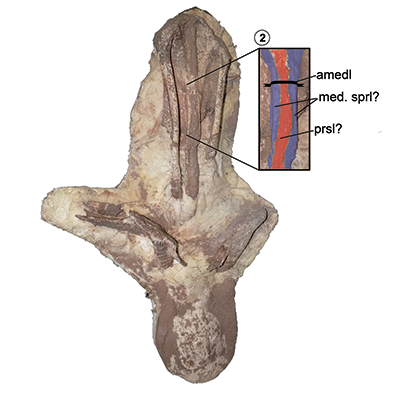
Additional Files
Published
Issue
Section
License
Copyright (c) 2022 Flavio Bellardini, Leonardo S. Filippi, Alberto C. Garrido, José L. Carballido, Mattia A. Baiano

This work is licensed under a Creative Commons Attribution-NoDerivatives 4.0 International License.

Authors retain copyright and grant the journal right of first publication with the work simultaneously licensed under a CC Attribution-NonCommercial 4.0 that allows others to share the work with an acknowledgement of the work's authorship and initial publication in this journal.







